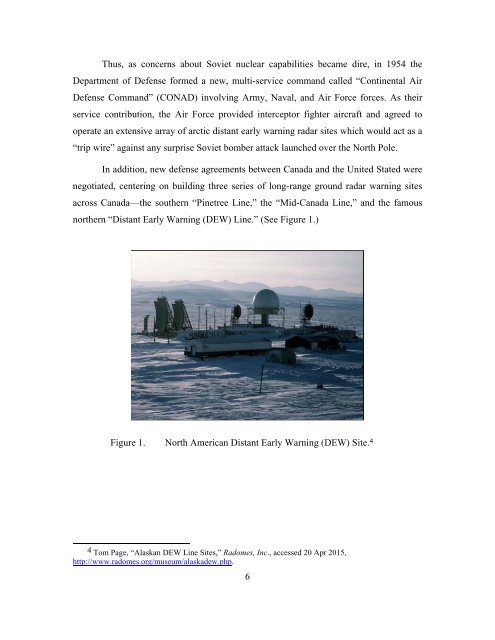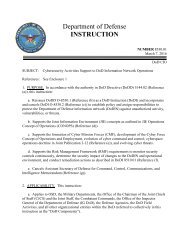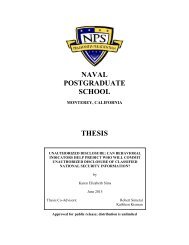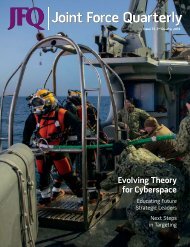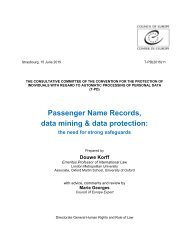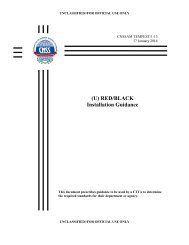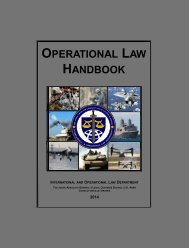SCHOOL THESIS
?view&did=788526
?view&did=788526
Create successful ePaper yourself
Turn your PDF publications into a flip-book with our unique Google optimized e-Paper software.
Thus, as concerns about Soviet nuclear capabilities became dire, in 1954 the<br />
Department of Defense formed a new, multi-service command called “Continental Air<br />
Defense Command” (CONAD) involving Army, Naval, and Air Force forces. As their<br />
service contribution, the Air Force provided interceptor fighter aircraft and agreed to<br />
operate an extensive array of arctic distant early warning radar sites which would act as a<br />
“trip wire” against any surprise Soviet bomber attack launched over the North Pole.<br />
In addition, new defense agreements between Canada and the United Stated were<br />
negotiated, centering on building three series of long-range ground radar warning sites<br />
across Canada—the southern “Pinetree Line,” the “Mid-Canada Line,” and the famous<br />
northern “Distant Early Warning (DEW) Line.” (See Figure 1.)<br />
Figure 1. North American Distant Early Warning (DEW) Site. 4<br />
4 Tom Page, “Alaskan DEW Line Sites,” Radomes, Inc., accessed 20 Apr 2015,<br />
http://www.radomes.org/museum/alaskadew.php.<br />
6


